Unfavorable-Semicircle-Wiki
Audio composites
Audio-sample compositing is a technique pioneered by Discord user N25_CT13 in December, 2023 that involves converting the stereo audio channels of Unfavorable Semicircle’s videos into images similar to visual composites - the core difference being that they are sourced from audio-samples rather than video-frames.
Some of the iconography unveiled through this process has been entirely novel to UFSC’s body-of-work, while others seem more familiar. One of the images revealed is the Hearthstone video-game icon.
The discovery of these composites seems to contradict the ♐️ANSWERS tweet that claimed no major discoveries were left to be made in the UFSC investigation. If legitimate, it’s also possible that the author was unaware of these images and that they are unintended side-effects of the process used to generate the huge quantity of videos uploaded.
First composite
N25_CT13: i dont know if this is useful or not but ive turned the lock’s right audio channel into an image
N25_CT13: i put every sample’s value as a pixel color and have set the image width to the amount of samples between repeating noises
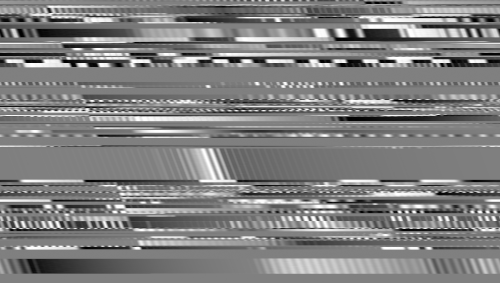
Compositing method
Discord user Dom explains the process:
Convert the audio samples to a black and white image, where sample height corresponds to pixel brightness
Shrink the image horizontally to about 1% of it’s original size (we went from 19880 pixels to 200)
Use standard compositing tools to find the correct width
Step #2 is also equivalent to speeding up the video 100x, we think. This is where resampling and interpolation come in.
It has been postulated that since YouTube’s encoding would not preserve the exact fidelity of any data encoded in audio samples, it was necessary for UFSC to first slow down the audio before uploading the videos. As such, the audios have to be sped up again to return to their intended form.
Dom: I was wrong earlier when I said the audio composites look better at x128. Some do, some don’t. The ball and the cube have much better proportions at x100, but less noise at x128.
I suggested x128 because the audio has a constant buzz of 375 hz, which is a period of exactly 128 samples at 48000 per second. Speeding up the audio effectively applies a low-pass filter that eliminates the buzz.
I think x100 is the correct scale, but we need to find a better way to de-noise the signal first.
Other composites
Unless stated otherwise, these are from ♐LOCK.
By N25_CT13
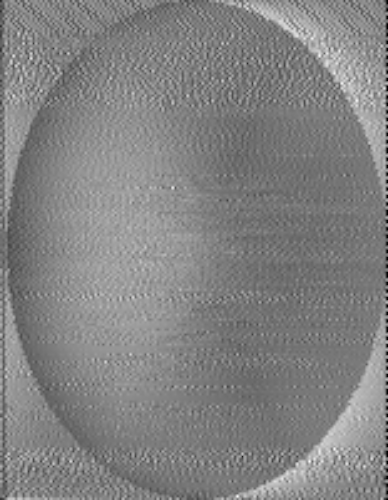
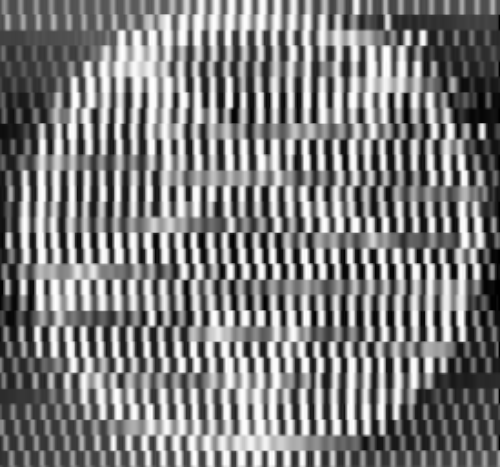
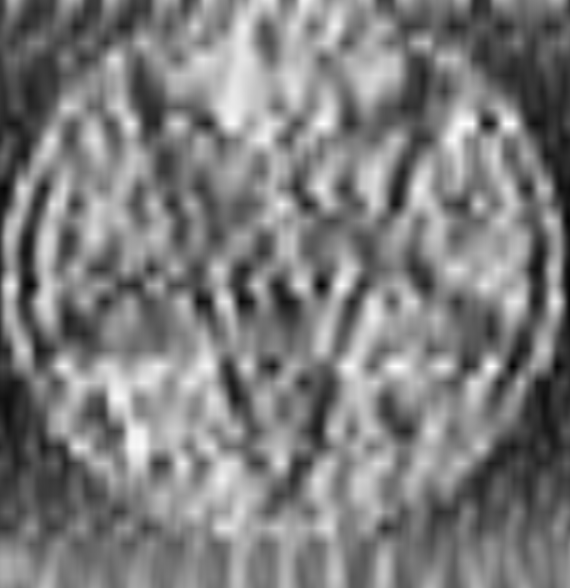
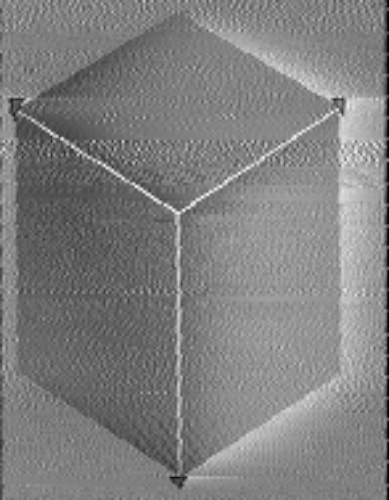
tukkek: these look nearly identical to some visual composites such as ♐FOND and ♐GOLDEN
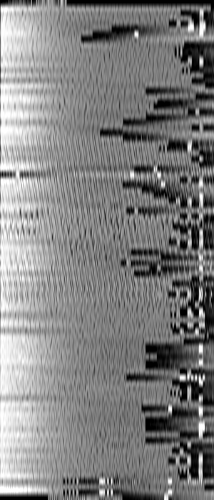
N25_CT13: also tried converting the handshake
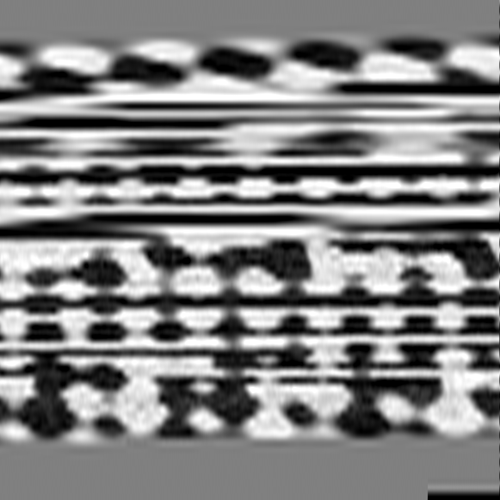
By Dom
Dom: Here are the first million samples (20.83 seconds) of LOCK’s left channel, generated using the script I linked above. I used the composite tool to reshape it to a width of 1024 pixels. It’s interesting to see so much periodicity at this width, since 1024 is a power of two
Dom: There are exactly 1024 (2^10) samples between the peaks in the first section. Then, after about a second of noise in the middle, there are exactly 128 (2^7) samples between peaks. I believe there are 65536 (2^16) samples in each of the repeating clips at the end
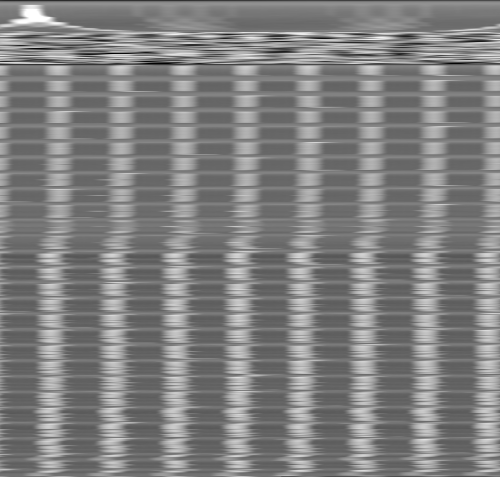
Dom: No wonder so many people said LOCK sounds like a printer. The waveform is literally forming this image line by line
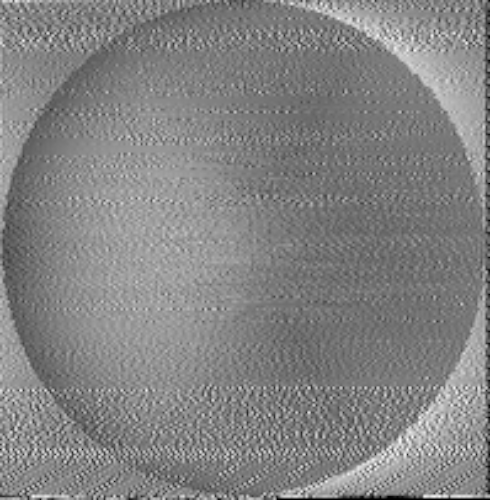
Dom: nteresting gradient from the left channel audio composite of LOCK, at ~25:41
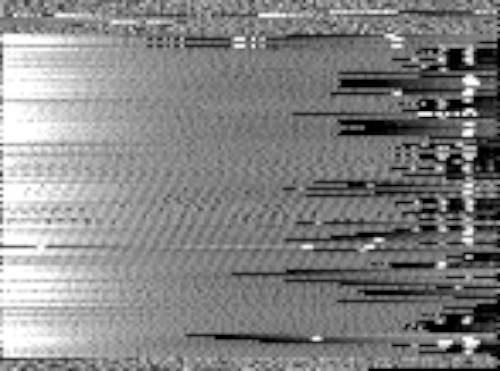
Dom: I’ve been focusing on the pentagrams lately. There are 3 different spots where they can be heard: 4:30, 5:17, and 9:01. Each instance has 3-5 pentagrams at different scales, which gives us a lot of data.
I think if we try overlaying the pentagram samples, we can eliminate the noise and get a better idea of how to denoise the other images
The pentagram array sample at 4:30, the other two look the same:
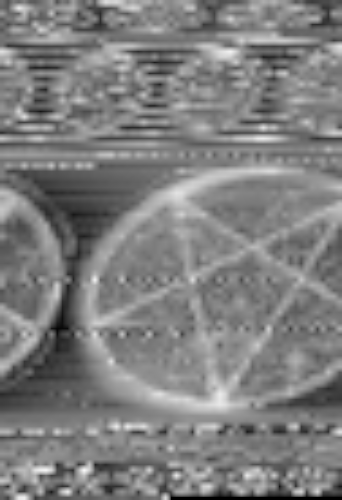
Dom: the three pentagrams featured in the array, each is visible at a certain composite width: 63, 42, and 21 pixels

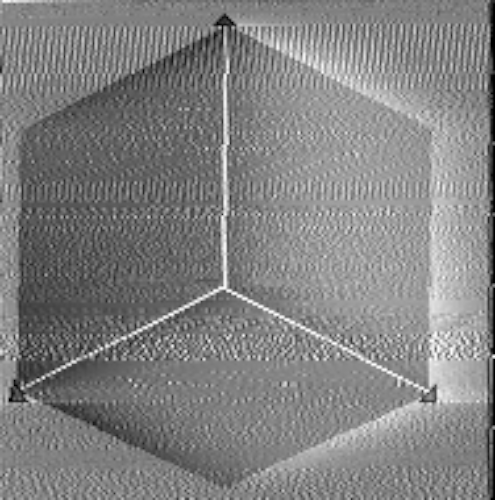
Hearthstone compass
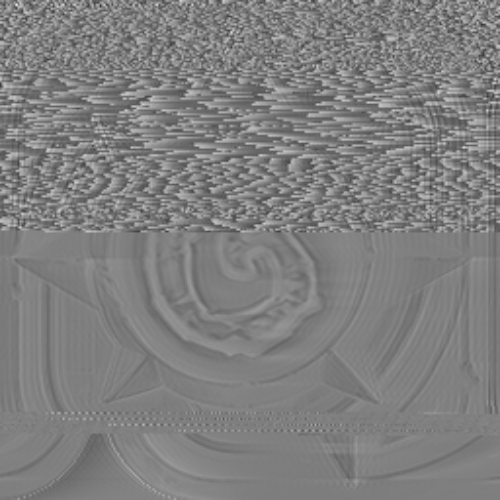
Dom: Here’s a cleaned up version I just made. I lined up the top and bottom half by hand and inverted the colors. The stripe about 1/4 of the way down is where the letters “L, O, C, K” are read
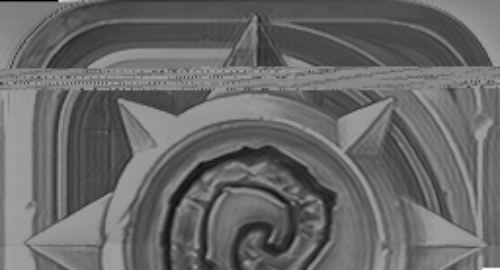
Possible text section
tukkek: these are letters aren’t they? pretty sure i see a couple As and Ds, a C and a F - all in two very clear, pixel-perfect lines of text

tukkek: the resizing is not ideal but: A on the bottom left, Ds on the right, everything aligned pixel-perfectly
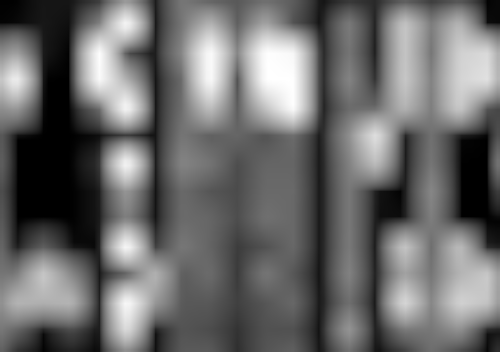
tukkek: AF?

By Elbe
Elbe: left audio channel, clear extraction
So I loaded the entire wav as a numpy array, then I split the thing into small arrays of length 128 (the distance between each peak) with an offset of 64 (gives lowest standard distribution of length between peaks -> one window should contain only one peak) and then on each window the maximum is the peak and the average of the minimum 5%-25% (so outlier that are lower are skipped and only the low values are taken, so we do not use the peak) of entries are the baseline. Finally just subtract peak from baseline (to get the difference in signal) and plot that (and baseline and peaks also)
peaks-baseline, peaks and baseline:



Executable file theory
Discord user noxxy presents the idea that the images being seen could be embedded media on an executable file:
there’s a bunch of relatively recognizable images being found between what seems to otherwise be just a mess of data. yknow what else does that? executable files!
that is to say, if there’s recognizable images, perhaps the stuff between is other data?
here’s the executable of a little game called rocks’n’diamonds being imported as raw data into GIMP for instance, with the relatively simple yet recognizable icon clearly visible. note how the icon above also seems to be stored upside down!
Executables can embed other media in them (like other files) so they can be distributed and managed more easily as a single file when preferred. In particular, embedded icons are used as a way to display a custom image to users of the program.
These icons have a variety of sizes in them, so that the operating system can choose the best version to show depending on the display resolution and context (such as a larger desktop icon or a smaller file-browser list-view item). Since automatic resizing of icons can generate poor results, developers are recommended to provide the differently-sized icons themselves.
N25_CT13: also i think the star is an .ico file since it repeats itself so many times
See also
- Composite visual overview
- ♐MOTH and ⊕RATE, which Discord user
noxxysuggests as potential targets for further investigation - Discord user
Mike & Richclaims “Stabilitory Newing has the same sort of printer sounds”
Scripts
By Dom
It only works with WAV files and it only does audio->image conversion, not resampling or “squishing”. If you use another program to speed up and convert the audio, and then put the output from this script into a composite tool, you may get some results.
#!/usr/bin/env python3
import cv2
import numpy as np
import math
import sys
import wave
# audio_2_image.py
#
# Input file must be in WAV format!
#
# Usage: python3 audio_2_image.py [options] <input_file>
# Options:
# -l Select left channel
# -r Select right channel
# -w <width> Specify width
def main():
input_file = None
select_left = True
select_right = True
width = -1
# Parse command line arguments
if len(sys.argv) <= 1 or sys.argv[1] == '-h':
print('Usage: python3 audio_2_image.py [options] <input_file>\n' +
'Options:\n' +
' -l Select left channel\n' +
' -r Select right channel\n' +
' -w <width> Specify width')
return
i = 1
while i < len(sys.argv):
arg = sys.argv[i]
if arg == '-l':
select_right = False
if select_left == False:
print('ERROR: Cannot use both -l and -r at once')
return
elif arg == '-r':
select_left = False
if select_right == False:
print('ERROR: Cannot use both -l and -r at once')
return
elif arg == '-w':
i += 1
if i == len(sys.argv):
print('ERROR: Must specify a number after -w')
return
else:
try:
width = int(sys.argv[i])
except ValueError:
print('ERROR: Must specify a number after -w')
return
if width <= 0:
print('ERROR: Width must be greater than 0')
return
else:
if input_file == None:
input_file = arg
else:
print('ERROR: Unknown token or duplicate file name:', arg)
return
i += 1
if input_file == None:
print('ERROR: No input file given')
return
# Open input WAV file
try:
w = wave.open(input_file, 'rb')
except wave.Error:
print('ERROR: Input file must be in WAV format')
return
except FileNotFoundError:
print('ERROR: File not found: ' + input_file)
return
number_of_channels = w.getnchannels()
number_of_frames = w.getnframes()
sample_width = w.getsampwidth()
if number_of_channels > 1:
print('%s: %d frames, %d channels' % (input_file.split('/')[-1], number_of_frames, number_of_channels))
else:
print('%s: %d frames' % (input_file.split('/')[-1], number_of_frames))
# Calculate output array size
if width == -1:
width = math.ceil(math.sqrt(number_of_frames))
height = math.ceil(number_of_frames / width)
if width >= 32767 or height >= 32767:
print('WARNING: Output dimension greater than 32,767. File might not save properly.')
# Create output arrays
left = None
right = None
if number_of_channels == 1:
if select_left == False or select_right == False:
print('Audio is mono, ignoring channel selection')
select_left = True
select_right = False
if select_left:
left = np.zeros(dtype=np.uint8, shape=(height, width, 1))
if select_right:
right = np.zeros(dtype=np.uint8, shape=(height, width, 1))
# Print starting text
if select_left and select_right:
print('Writing to left.png AND right.png at %dx%d' % (width, height), end='', flush=True)
elif select_left:
print('Writing to left.png at %dx%d' % (width, height), end='', flush=True)
else:
print('Writing to right.png at %dx%d' % (width, height), end='', flush=True)
tenth_interval = number_of_frames // 10
# Read all audio samples to image array(s)
for n in range(number_of_frames):
frame = w.readframes(1)
if select_left:
left_sample = int.from_bytes(frame[0:2], byteorder='little', signed=True)
if select_right:
right_sample = int.from_bytes(frame[2:4], byteorder='little', signed=True)
# Convert from 16-bit signed (-32,768 to 32,767) to 8-bit unsigned (0 to 255)
if select_left:
left_sample = int(((left_sample/32768) + 1.0)*128)
if select_right:
right_sample = int(((right_sample/32768) + 1.0)*128)
x = n % width
y = n // width
if select_left:
left[y, x] = left_sample
if select_right:
right[y, x] = right_sample
if n % tenth_interval == 0:
print('.', end='', flush=True)
print('DONE')
# Write image(s)
if select_left:
cv2.imwrite("left.png", left)
if select_right:
cv2.imwrite("right.png", right)
if __name__ == '__main__':
main()
I just finished a script to repair the clipping in LOCK. The amplitude has been decreased to 1/4 to make room for the peaks, so we’ve lost a little precision, but we can now see data values that were previously clipped to pure white.
#!/usr/bin/env python3
import cv2
import numpy as np
import math
import sys
import wave
def main():
win = wave.open('LOCK_left.wav', 'rb')
number_of_channels = win.getnchannels()
number_of_frames = win.getnframes()
sample_width = win.getsampwidth()
wout = wave.open("out.wav", "wb")
wout.setnchannels(1)
wout.setsampwidth(2)
wout.setframerate(48000)
cutoff = 32768 - 16
scale = 0.25
clip_size = 0
counter = 0
prev_samples = [0]*2048
for n in range(number_of_frames):
frame = win.readframes(1)
sample = int.from_bytes(frame, byteorder='little', signed=True)
if sample >= cutoff or sample <= -cutoff:
clip_size += 1
else:
if clip_size > 0:
counter += 1
if counter == 2:
start_slope = prev_samples[-2*2 - clip_size + 2] - prev_samples[-2*2 - clip_size + 1]
start_slope *= clip_size + 1
end_slope = sample - prev_samples[-2 + 1]
end_slope *= clip_size + 1
a = start_slope + end_slope
b = -2*start_slope - end_slope
c = start_slope
for m in range(clip_size):
x = (m + 1)/(clip_size + 1)
#ramp_sample = min(prev_samples[-2*2 - clip_size + 2] + start_slope*x, 2*cutoff)
poly_sample = a*x*x*x + b*x*x + c*x + prev_samples[-2*2 - clip_size + 2]
poly_sample = min(poly_sample, 2*32768 - 1)
#sin_sample = 32767*(0.5 + 0.5*math.sin(3.1415*m/(clip_size - 1)))
#sin_sample = cutoff
wout.writeframes(max(-32768, min(32767, int(scale*poly_sample))).to_bytes(2, 'little', signed=True))
for m in range(2 - 1):
prev_sample = prev_samples[-2 + m]
wout.writeframes(int(scale*prev_sample).to_bytes(2, 'little', signed=True))
wout.writeframes(int(scale*sample).to_bytes(2, 'little', signed=True))
#print(n, clip_size)
clip_size = 0
counter = 0
else:
wout.writeframes(int(scale*sample).to_bytes(2, 'little', signed=True))
prev_samples.append(sample)
prev_samples.pop(0)
win.close()
wout.close()
if __name__ == '__main__':
main()
By ShinyQuagsire
ooh I managed to pull out more detail
there are more icons underneath
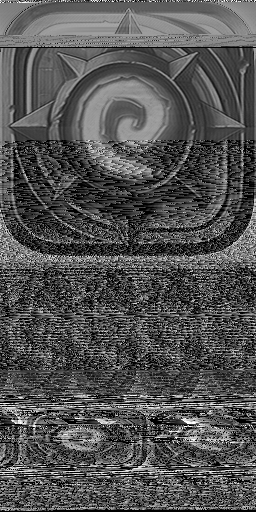
https://gist.github.com/shinyquagsire23/383450a11b81d3c952599af9f633ceb3
python3 lock_decode.py -l -w 256 Downloads/lock_audio_s16.wav